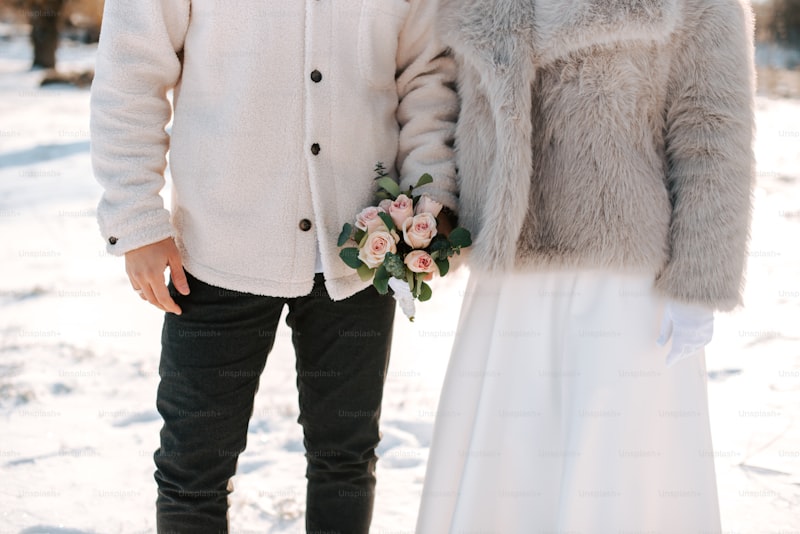Exploring Heritage Wedding Attire: Embrace Tradition with Elegance
Weddings are a beautiful celebration of love and unity, and what better way to honor this special occasion than by embracing heritage wedding attire? This unique style not only reflects rich cultural backgrounds but also brings a sense of authenticity and elegance. In this article, we will delve into the significance, styles, and considerations of heritage wedding attire, ensuring that you, as a bride or groom, make informed choices for your special day.
The Importance of Heritage in Wedding Attire
Heritage wedding attire has profound significance, as it connects individuals to their cultural roots and familial traditions. Many couples choose these garments to pay homage to their ancestors and celebrate their identity. Heritage outfits can be deeply symbolic, showcasing the values and history of families, and thus creating a beautiful narrative for the wedding day.
Types of Heritage Wedding Attire
When it comes to heritage wedding attire, there is a plethora of styles to choose from. Here are some of the most popular types:
| Culture | Attire Example |
| Indian | Saree for brides and Sherwani for grooms |
| Chinese | Qipao for brides and Changshan for grooms |
| Scottish | Kilt for grooms and Tartan dress for brides |
| African | Kaftan for brides and Dashiki for grooms |
Each type of attire has unique elements that reflect the culture it represents. For instance, Indian wedding attire often features intricate embroidery and vibrant colors, while Scottish garb includes traditional tartan patterns that signify clan heritage. Choosing the right attire involves considering both personal style and cultural significance.
Design Elements and Fabrics
Heritage wedding attire is renowned for its use of luxurious fabrics and exquisite designs. Here are some key elements that make these garments stand out:
- Fabrics: Common materials include silk, brocade, and lace. Each fabric contributes to the ensemble's overall elegance and comfort.
- Embroidery: Many heritage outfits feature intricate hand-stitched patterns that tell a story. Embroidery techniques vary by culture, showcasing diverse craftsmanship.
- Colors: Each culture has traditional colors associated with weddings. For instance, red is auspicious in Chinese weddings, symbolizing good fortune.
Combining Modern Trends with Heritage Attire
While it's essential to honor traditional designs, many couples are also looking to incorporate modern trends into their heritage wedding attire. This fusion can create a unique aesthetic that reflects both history and contemporary style.
Brides may choose to wear a traditional saree but pair it with modern jewelry or accessorize with contemporary shoes. Grooms can opt for traditional kurtas but select trending colors or cuts to give a modern twist to their look. This blend allows couples to express their identities while still respecting their heritage.

Planning for Heritage Wedding Attire
When planning for your heritage wedding attire, consider the following tips:
- Research: Understand the significance of the garments and designs within your culture. This knowledge will help you make a well-informed decision.
- Consult Family: Engaging with family members can provide insights, suggestions, and even heirlooms that can be incorporated into your wedding attire.
- Tailoring: Ensure that your attire fits perfectly. A skilled tailor can make custom adjustments to enhance your comfort and appearance.
- Budgeting: Heritage wedding attire can vary widely in cost. Set a budget that allows you to invest in quality pieces without overspending.
Heritage Wedding Attire for Diverse Cultures
Heritage wedding attire is not limited to a specific culture. In our increasingly globalized world, couples from different backgrounds often blend styles to celebrate their diverse heritages. This fusion can result in stunning clothing that honors both traditions, ultimately creating a memorable experience.
Some popular combinations include:
- Indian and Western: A bride may opt for a traditional lehenga paired with a western-style bouquet and makeup.
- Mexican and American: Incorporating elements such as colorful embroidered dresses alongside conventional tuxedos can bring cultural richness to the event.
- Japanese and Western: A traditional kimono worn during the ceremony can be complemented by a modern wedding gown for the reception.
Choosing the Right Accessories
The right accessories can enhance the overall look of heritage wedding attire. Here are some suggestions:
- Jewelry: Traditional jewelry pieces, such as jhumkas in Indian weddings or kanzashi in Japanese ceremonies, can add to the cultural authenticity of your look.
- Footwear: Select shoes that complement your heritage attire. Consider traditional styles or modern alternatives that match the outfit while ensuring comfort.
- Hairstyles: Opt for hairstyles that reflect cultural significance. For example, elaborate braids or floral adornments can elevate the traditional look.
Conclusion: Embracing Heritage Wedding Attire
Heritage wedding attire allows couples to honor their roots while celebrating their love. By choosing garments with deep cultural significance, couples weave a story of unity and tradition into their special day. Remember, your wedding attire should reflect your personal style, beliefs, and the love you share. As you prepare for your nuptials, keep in mind the importance of research, family involvement, and incorporating modern elements into your look. Embrace heritage, celebrate your identity, and above all, enjoy every moment of planning this once-in-a-lifetime event.
In summary, heritage wedding attire is more than just clothing; it embodies tradition, pride, and love. Whether you are planning a grand celebration or an intimate gathering, consider choosing an outfit that resonates with your cultural background. Happy planning!